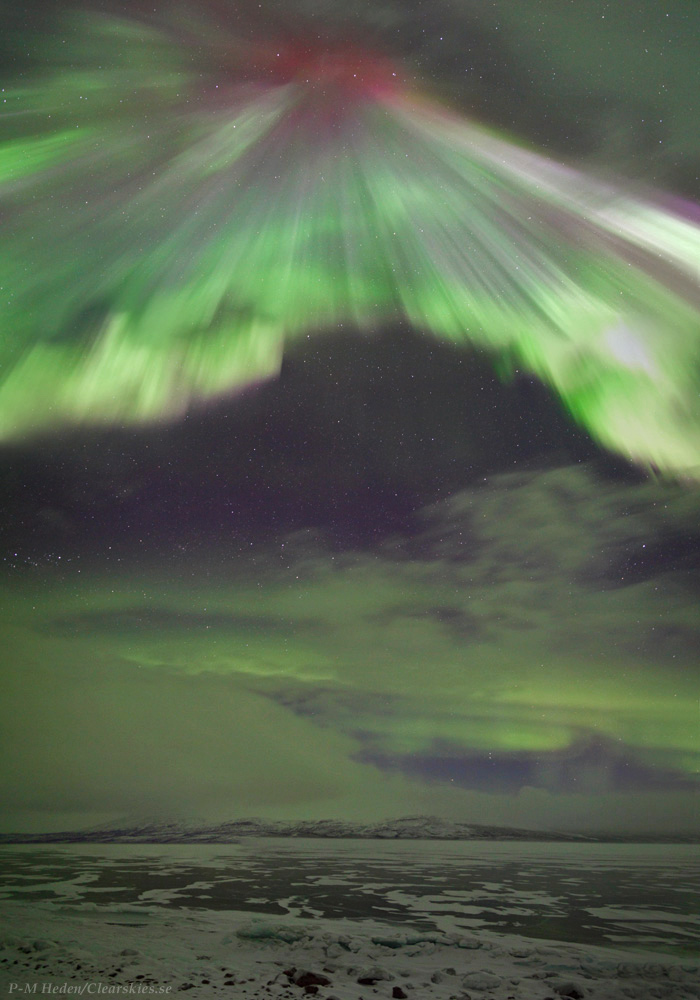
The northern lights are in stunning display over a frozen lake in northern Sweden in this skywatching photo.
Swedish skywatcher P-M Heden of The World At Night snapped this image at Abisko National Park in Lapland, northern Sweden on March 17.
Auroras occur when charged particles from the sun's solar wind interact with Earth's upper atmosphere (at altitudes above 50 miles, or 80 km), causing a glow. The particles are funneled to Earth's polar regions by the planet's magnetic field. The auroras over the North Pole are known as the aurora borealis, or northern lights. The lights over the South Pole are dubbed the aurora australis, or southern lights.
In the image, the aurora seems to burst from the sky in a flash of red and green appearing near the zenith (directly overhead). When the aurora is most active, it creates a beautiful display of bright colors called the aurora corona.
Editor's note: If you have an amazing skywatching photo you'd like to share for a possible story or image gallery, please contact managing editor Tariq Malik at tmalik@space.com.
Follow SPACE.com for the latest in space science and exploration news on Twitter @Spacedotcom and on Facebook.
Get the Space.com Newsletter
Breaking space news, the latest updates on rocket launches, skywatching events and more!
Join our Space Forums to keep talking space on the latest missions, night sky and more! And if you have a news tip, correction or comment, let us know at: community@space.com.
Nina Sen is a freelance writer and producer who covered night sky photography and astronomy for Space.com. She began writing and producing content for Space.com in 2011 with a focus on story and image production, as well as amazing space photos captured by NASA telescopes and other missions. Her work also includes coverage of amazing images by astrophotographers that showcase the night sky's beauty.









